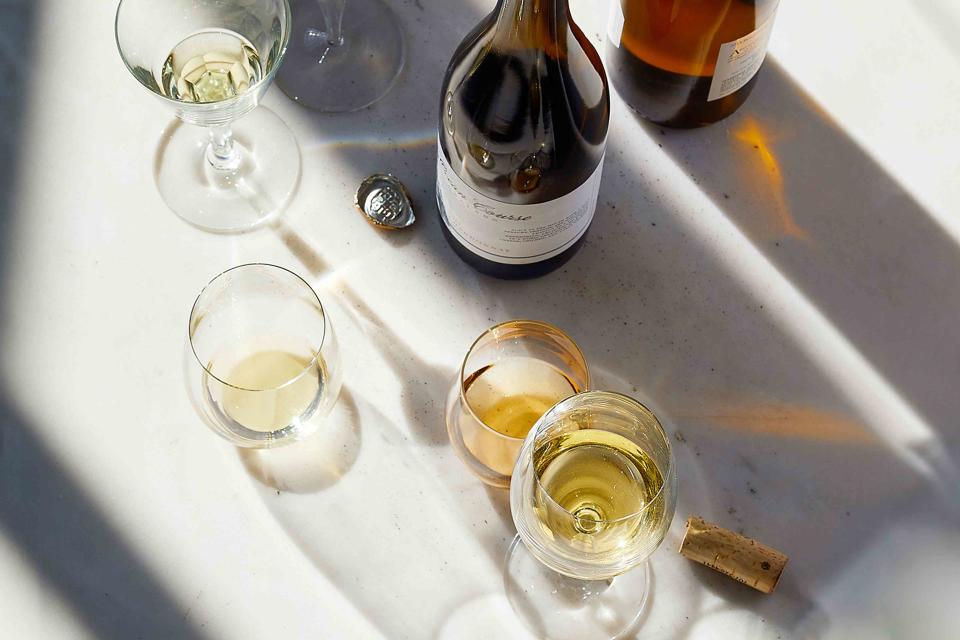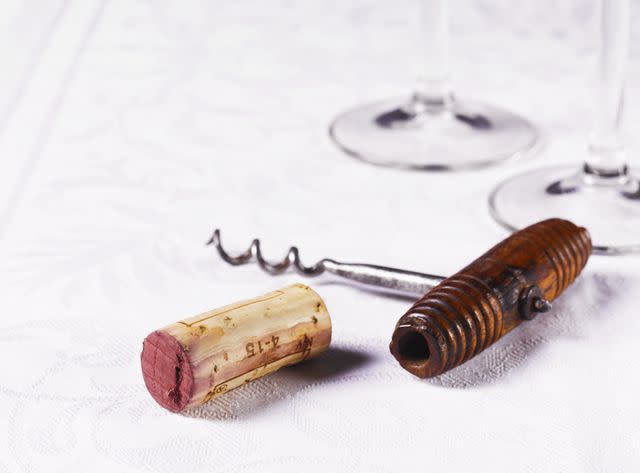Are Corks Always Best? Wine Experts Weigh in on the Merits of Boxed, Screw-Top, and Canned Options
You might have heard that wine in boxes, cans, and screw-top bottles is of lower quality—is that still true?

Bryan Gardener
In the world of wine, it's not just what's inside that counts. Wine packaging isn't only about aesthetics—it's a crucial element influencing the entire drinking experience. Today, we have many choices: corks, screw tops, boxed wine, and wine in cans, and each type of closure brings its unique characteristics to the table. Beyond preserving the contents, how we seal our wine can influence flavor, aging potential, and environmental impact. So, which type of closure is best? Read on to learn about the pros and cons of each style and determine which is the best match for you.
Meet Our Expert
Michael Davies, executive winemaker at A to Z Wineworks
Katie Nelson, vice president of winemaking at Chateau Ste. Michelle
Related: How Long Does an Open Bottle of Wine Last?
Corks
Back in the 1400s, corks became the go-to wine bottle closure simply because cork was the only material flexible enough to seal a glass bottle effectively. Crafted from the bark of the cork oak tree, cork can be harvested without causing harm to the tree itself. While wine bottle closures remain the primary use for natural cork today, it's worth noting that cork has other uses, from shoes to yoga blocks and even those Pinterest-inspired craft projects you've been eyeing!
Pros of Corks
For an impressive 500-year stretch, cork was the best option for sealing wine: not only does it prevent leaks, but natural corks also permit a controlled influx of oxygen into the bottle, helping the wine gracefully age and mature. And wine lovers truly love the romance and ritual of pulling out the cork.
Cork Cons
There are downsides to natural corks: they can inadvertently absorb a chemical compound known as TCA (short for 2,4,6-trichloroanisole), which can contaminate the wine in the bottle. When tainted by TCA, corks impart an unpleasant musty aroma and moldy cardboard flavor. If you've ever heard a sommelier pronounce a faulty wine as "corked," they're referencing this. It's important to note that TCA itself is not harmful when imbibed, but it can render a wine extremely unpalatable.
One additional downside to natural corks is that since they're harvested from natural materials, they are inconsistent. Some have a very tight grain and allow very little oxygen into the bottle during the aging process, and some are very porous and can even become dry and crumbly (especially if you're not storing your bottles the right way.) This inconsistency is tricky for winemakers; they can't always predict how a wine will develop in the bottle, and wine retailers and collectors will have the same dilemma when determining a wine's optimal drinkability window.
Are the Best Wines Sealed With Corks?
There is no hard and fast rule about what types of wines are sealed with natural corks today—it's truly the winemaker's choice. While it's true that in the past, most expensive bottles always had a natural cork, today, you'll find many fine wines sealed with all types of alternate closures in addition to cork, depending on what the producer deems best for that particular wine.
Screw Tops
Screw-top closures, also called Stelvin caps, were put into use to combat some of the issues inherent in natural corks. They were invented in the 1960s, inspired by caps called Stelcaps that were used to seal spirits bottles. It wasn't until the 1990s that screw tops became more mainstream. This is because natural cork quality had been on such a massive decline that winemakers were tired of having their hard work in the vineyard and winery ruined by shoddy corks.

Screw Top Pros
Winemakers love screw tops because they almost entirely eliminate the risk of TCA contamination, the wines stay fresher, and they are a consistent and reliable way to ensure every bottle tastes the same (and just how the winemaker intended).
But those aren't the only advantages of screw tops. Michael Davies, executive winemaker at A to Z Wineworks admits that the user experience also plays a role. "We're thinking about the customer and occasions for which screw caps can be practical. You don't need a special tool to open the bottle if you're traveling, and the ease of re-sealing and re-opening the wine is beneficial both to those at home who won't finish all at once, as well as restaurant servers offering wines by the glass," he says
There Aren't Any Cons
Initially, consumers perceived screw tops as a cheaper alternative to corks, with the misconception that screw-top wines were lower quality. But today, screw tops are ubiquitous. Their use by wineries has jumped by more than 20 percent in the past couple of years, according to Wine Business Monthly. As with natural corks, there's no rule around which types of wines will be sealed with a screw top, and the idea that lower-quality wines end up in screw-top bottles is a myth.
Boxed Wine
Boxed wine, playfully nicknamed "Cardbordeaux," is typically packaged in a volume of 3 liters, the equivalent of four standard 750ml bottles. The wine is stored in a plastic bag within the box.
Boxed Wine Pros
A significant perk of boxed wine is its impressive preservation capability, allowing the contents to stay fresh for up to 4 to 6 weeks after opening. Beyond the extended freshness, the eco-friendly packaging adds to its appeal, as it is recyclable, generates 84 percent less waste than glass bottles, and significantly reduces shipping weight, contributing to a lower carbon footprint.
With its generous volume, boxed wine is excellent for social gatherings and parties. However, since it stays fresh in your refrigerator for so long, it's also ideal for solo drinkers who want to enjoy a glass or two every now and then without the commitment of opening an entire bottle.
The Only Boxed Wine Con Is an Image Problem
Particularly in the U.S, boxed wine still has an image problem—probably because the first wines available in boxes were seen as lower-quality vino. Finally that perception is shifting as high-quality, innovative brands such as Wineberry and From The Tank challenge that image and transform negative perceptions of boxed wine. Top California winery Tablas Creek even has a $95 boxed red. Expect to see a wider range of premium boxed options, especially as wineries look for ways to be more eco-friendly.
Cans
While wine in a can may have started as a trend, it's now a mainstream phenomenon. The growth in canned wine sales has been extraordinary, with an astronomical increase of over 3,800 percent in volume sales between 2017 and 2021, according to Nielsen. In the 52 weeks concluding on March 25, 2017, sales tallied $5.9 million. Fast forward to the 52 weeks culminating on March 20, 2021, and dollar sales soared to an impressive $253 million, marking a substantial 62 percent spike from the previous year. And new options continue to proliferate.
Pros
Washington State wine producer Chateau Ste. Michelle has seen massive success in canned wine with their 14 Hands brand. They attribute a lot of that to the convenience of cans. "We've seen that many wine drinkers are very open to alternative packaging and generally have positive impressions, especially younger generations," says Katie Nelson, vice president of winemaking at Chateau Ste. Michelle. "They see these formats, like cans, as more portable and great for casual occasions, whether relaxing at home with friends or for outdoor activities at the pool, beach, or a concert."
Cans are lighter to ship than bottles, producing a much lower carbon footprint, and a more significant percentage of aluminum cans actually get recycled as compared to glass bottles. Another advantage? The single-serve format is useful as drinking trends like moderation become more mainstream.
There Are No Can Cons
We can't find anything wrong with wine that comes in cans. But while hard-core can enthusiasts might prefer sipping directly from the can, we recommend pouring the wine into a glass, allowing it to open up for a few minutes before savoring each sip.

Peter Dazeley / Getty Images
What's the Best Choice?
Each type of wine packaging has advantages depending on the context and situation.
Craving consistency and convenience, and don't want to worry about cork taint? Go for a screw top.
If you're serving a romantic dinner and want to savor the luxury of pulling a natural cork out of an aged bottle, corks are the best choice.
Those very committed to eco-friendly, sustainable lifestyles should explore the ever-growing world of boxed wine.
If you want to enjoy wine where bottles usually can't go—parks, pools, concerts—the portability of wine in a can can't be beat!
All have a place in today's landscape of wine. After all, the beauty of innovation is that there's still a place for tradition. Just as e-readers and tablets haven't replaced books, streaming services haven't replaced vinyl, and credit cards haven't made cash obsolete—screw tops, boxes, and cans are just more options we have to choose from. With such a wide array of wine packaging solutions, it's a great time to be a wine lover.
Read the original article on Martha Stewart.

